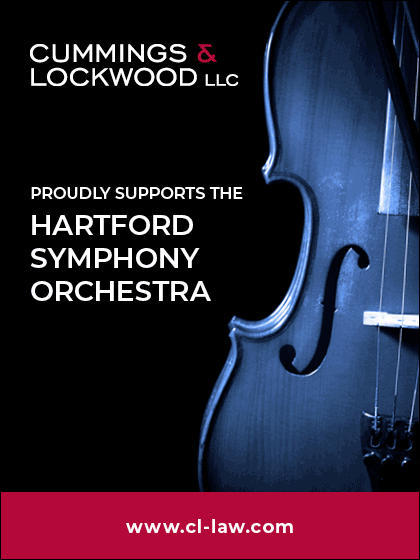World Premiere: February 15, 1867
Last HSO performance: January 10, 2010
Instrumentation: 2 flutes with 2nd doubling piccolo, 2 oboes, 2 clarinets, 2 bassoons, 4 horns, 2 trumpets, 1 trombone, 1 tuba, timpani, bass drum, triangle, snare drum, strings
Duration: 9’
“This fiend of German birth, destitute of grace, delicacy and propriety, a disgusting practice,” spluttered one English writer of the 1830s about that diabolic instrument of immorality, The Waltz. Why, in this depraved display, he ranted, the couple actually danced in each other’s arms, refusing to keep the respectable distance that characterized all the good, old dances. And it was that crafty pair of Viennese tunemongers, Johann Strauss the Elder and his buddy Josef Lanner, who were the main perpetrators of this insult to humanity, dispensing a concoction of sounds that Richard Wagner described as “a stronger narcotic than alcohol” arousing “passions bordering on mad fury.” Alas for the poor Englishman, anything that delicious was bound to be a success.
The waltz was descended from an Austrian peasant dance called a Ländler, a heavy-handed (footed?) affair in moderate triple meter that gained great popularity during Mozart’s last years in Vienna. (He wrote music for such German Dances when they were first allowed to join the staid, old minuet in the imperial balls in 1788.) The Viennese went mad over the new dance, and spent many nights literally dancing until dawn. Michael Kelly, a friend of Mozart and a participant in the premiere of The Marriage of Figaro, noted such dedication in the 1790s to this sort of merriment that, “for the sake of ladies in the family way who would not be persuaded to stay at home, there were apartments prepared, with every convenience for their accouchement, should they be unfortunately required.” It was really in the 1830s and 1840s, however, that the waltz established its form and style and became a European mania. Strauss the Elder led a crack orchestra in his own compositions, faster-tempo and more lilting modernizations of the old Ländler. So great was the popularity of the waltz during his lifetime that, during at least one carnival season, the ballrooms of Vienna could accommodate 50,000 people in an evening — in a city with a population of 200,000. His reputation spread well beyond the Austrian capital, and he was called on to play 72 public concerts in England during the coronation of Queen Victoria in 1837.
Papa Johann tried to discourage his sons from going into the music business, but Johann Jr. was determined to be part of the waltz madness. He established a rival orchestra to that of his father and both prospered for some time, but at his father’s death in 1849 the son merged the two ensembles. Strauss the Younger was soon dubbed “The Waltz King,” and he ruled over his domain as had no one in the history of music. He not only made money — he made people happy. One French journalist wrote in 1852, “In every house, on every piano in Vienna, lie Strauss waltzes.... They are sung and trilled and played throughout Europe. Plebeian and aristocrat hum and pipe them; orchestra and barrel organ play them. We hear them on the street, at the ball, in the garden, and at the theater.” “At its best,” wrote Hans Fantel, “in such creations as The Blue Danube, the Emperor Waltz or Tales from the Vienna Woods, the waltz is perhaps the closest description of happiness ever attained in any art.” The waltz continued to flourish into the 20th century, becoming almost an opiate in those feverish years before World War I when the old Austro-Hungarian Empire was rapidly decaying. The waltz became, and remains, a symbol of a better, more care-free time, when an elegantly beribboned captain would whirl away the night with his dazzling companion. The door to this beautiful past is still held open by those who created it — Johann Strauss, father and son.
“The universe of the waltz can be epitomized in about fifteen minutes simply by playing On the Beautiful Blue Danube,” according to former New York Times critic Hans Fantel. “More eloquently, more concisely than any other work, it embodies the essence of the waltz in form and spirit.” On the Beautiful Blue Danube, however, almost sank beneath the waves at its launching. Johann Herbeck, director of the Vienna Men’s Chorus, asked Strauss if he could provide some music in a popular style for the concerts of his ensemble. Strauss was uneasy setting words during those years before he began composing for the stage, but he did send Herbeck a melody inspired by a line from a poem of Karl Isidor Beck: “On the Danube, on the beautiful, blue Danube.” Herbeck assigned Josef Weyl, a police clerk who sang in the chorus and a poet-manqué, to concoct some verses to fit Strauss’ exquisite melody. “Vienna, be gay! And what for, pray? The light of the arc! Here it’s still dark!” was the best that Weyl could do. (Hans Fantel suggests that this doggerel may have been prompted by the carbon-electrode lights just beginning to sprout on Vienna’s street corners.) The members of the chorus almost mutinied at the prospect of mouthing such drivel, but were finally convinced by Herbeck to go through with the performance, which took place at the hall of the Imperial Riding School (home of the famous Lipizzaner stallions) on February 15, 1867. The press notices were not unkind, but Strauss judged the whole thing a marginal fiasco, and quietly tucked On the Beautiful Blue Danube in his desk. Later that year, Strauss was invited to take part in the International Exhibition in Paris that Napoleon III was staging in honor of himself. His music proved so successful in the French capital that he dusted off On the Beautiful Blue Danube, and displayed it to the delirious Parisians. Within weeks, demand for the work spread across the western world. During his visit to the United States in 1872 to take part in the “International Peace Jubilee” organized by Patrick S. Gilmore in Boston, Strauss conducted 20,000 singers and 10,000 instrumentalists (under the frantic guidance of 100 sub-conductors) in a gigantic performance of the work.
©2024 Dr. Richard E. Rodda

